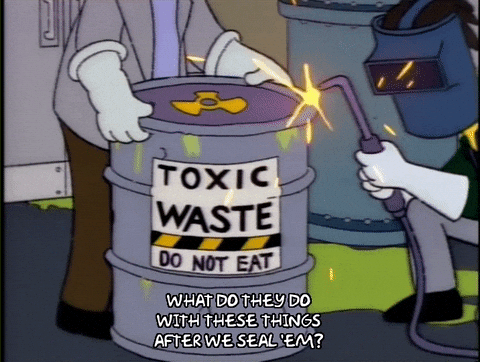 Our government just told polluters
they are free to pump deadly chemicals into our air and water. That’s because
the Environmental Protection Agency (EPA) has suspended all enforcement indefinitely, until the
COVID-19 crisis is over.
Our government just told polluters
they are free to pump deadly chemicals into our air and water. That’s because
the Environmental Protection Agency (EPA) has suspended all enforcement indefinitely, until the
COVID-19 crisis is over.
This terrifies me. I know firsthand
that giving polluters free rein will cost thousands, even millions, of lives.
As a young mother in Niagara Falls,
New York in the 1970s, I watched toxic chemicals bubble up through our lawns,
poisoning our children.
When my neighbors and I discovered that our neighborhood, Love Canal, was built on a toxic waste dump, our advocacy led to the creation of the first Superfund site by Congress in 1980.
When my neighbors and I discovered that our neighborhood, Love Canal, was built on a toxic waste dump, our advocacy led to the creation of the first Superfund site by Congress in 1980.
Today the EPA acknowledges more
than 40,000 Superfund communities across the United States —
from rural areas to major cities like Birmingham and Detroit — that are already
polluted with toxic air and water from industrial sites. At these sites, at
least, the government has required polluters to contribute to cleanup.
But there are tens of thousands more
communities not yet on this list, where the pollution continues unabated. These
are known as “sacrifice zones” — places where the health of residents is
permanently sacrificed to industrial contamination.
Already, 36 percent of all
school-age children — over 19.6 million — live in sacrifice zones. But
if the EPA abandons its oversight of polluting industries now, this number of
dangerously uninhabitable communities will grow exponentially. Many more people
will die.
In short, the EPA just gave
polluters a license to kill.
EDITOR'S DISCLOSURE: I worked as Lois's National Organizing Director from 1981 to 1989. - Will Collette
On March 26, the EPA said it will not “seek penalties for noncompliance with routine monitoring and reporting obligations” from polluters until further notice. This came days after the American Petroleum Institute sent a 10-page letter to the EPA, asking them to suspend enforcement.
On March 26, the EPA said it will not “seek penalties for noncompliance with routine monitoring and reporting obligations” from polluters until further notice. This came days after the American Petroleum Institute sent a 10-page letter to the EPA, asking them to suspend enforcement.
And while the EPA now claims the
pandemic is the reason, this change has been coming for months. Last November,
they rolled back requirements that companies take safety measures to prevent
chemical releases, calling these regulations “burdensome,” “costly,” and “unnecessary.”
If we told drivers there are no more
traffic rules, most would still do the right thing and drive safely. But a
handful will drive drunk, blow through stop signs, and run over pedestrians. A
few scofflaws make our country a much more dangerous place.
That’s especially true in sacrifice
zones where residents are being told to shelter in place because of COVID-19 —
they can’t leave. Often this may apply to communities they had previously been
told were toxic.
Imagine how a shelter in place order
must feel to people like Eddie Ramirez.
He’s one of the 60,000 Texans who
were ordered to leave — then return, and stay home —
after a petrochemical plant explosion in Port Neches last November released
dangerous amounts of butadiene, which causes nervous system damage. After Eddie
returned home, authorities realized dangerous chemicals were still in the air,
so they ordered residents to evacuate a second time.
TCP Group, the Houston-based
petrochemical company that owns the Port Neches plant, had to pay more
than $378,000 in penalties for more violations last
year. If the EPA suspends even minimal penalties like these, polluters have no
incentive to do the right thing.
Dozens of refinery fires and factory explosions emit toxic
chemicals into the environment every year. If we remove penalties and
enforcement, there will be more.
And right now, because of COVID-19
and our government’s refusal to protect our environment, the residents of
sacrifice zones like Port Neches are like sitting ducks. They have no place to
go. It is our responsibility to keep them safe.
Lois
Gibbs is the founder of the Center for Health and Environmental
Justice, part of the People’s Action network of grassroots groups. She helped
win recognition for the first Superfund site at Love Canal in Niagara Falls,
New York in 1980. This op-ed was distributed by OtherWords.org.